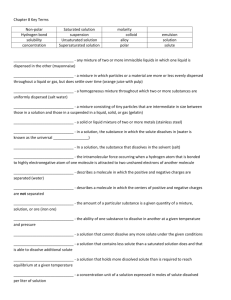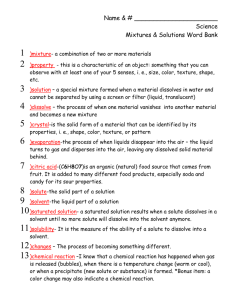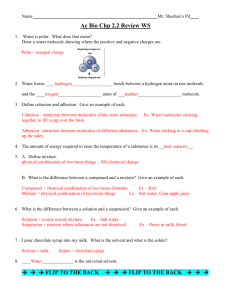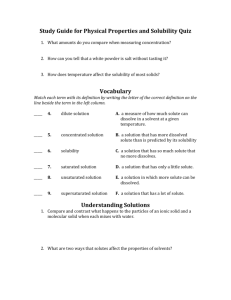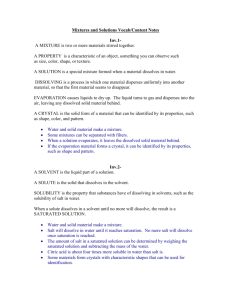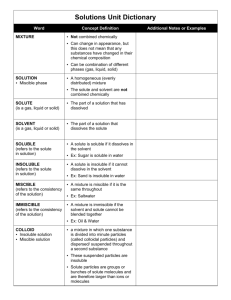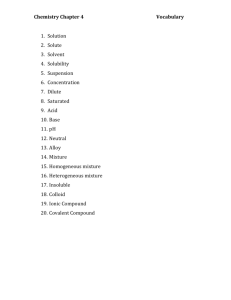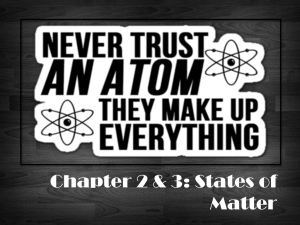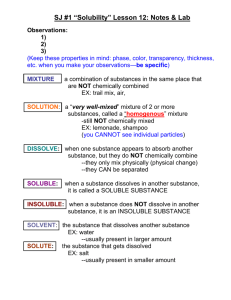Chapter 7
advertisement
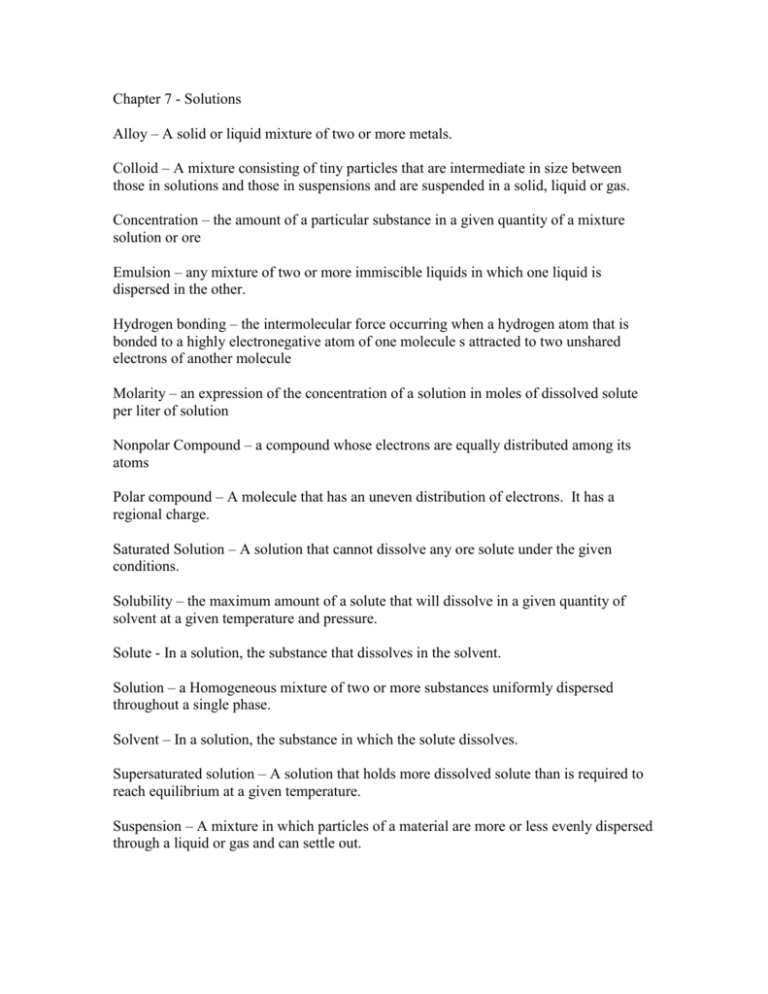
Chapter 7 - Solutions Alloy – A solid or liquid mixture of two or more metals. Colloid – A mixture consisting of tiny particles that are intermediate in size between those in solutions and those in suspensions and are suspended in a solid, liquid or gas. Concentration – the amount of a particular substance in a given quantity of a mixture solution or ore Emulsion – any mixture of two or more immiscible liquids in which one liquid is dispersed in the other. Hydrogen bonding – the intermolecular force occurring when a hydrogen atom that is bonded to a highly electronegative atom of one molecule s attracted to two unshared electrons of another molecule Molarity – an expression of the concentration of a solution in moles of dissolved solute per liter of solution Nonpolar Compound – a compound whose electrons are equally distributed among its atoms Polar compound – A molecule that has an uneven distribution of electrons. It has a regional charge. Saturated Solution – A solution that cannot dissolve any ore solute under the given conditions. Solubility – the maximum amount of a solute that will dissolve in a given quantity of solvent at a given temperature and pressure. Solute - In a solution, the substance that dissolves in the solvent. Solution – a Homogeneous mixture of two or more substances uniformly dispersed throughout a single phase. Solvent – In a solution, the substance in which the solute dissolves. Supersaturated solution – A solution that holds more dissolved solute than is required to reach equilibrium at a given temperature. Suspension – A mixture in which particles of a material are more or less evenly dispersed through a liquid or gas and can settle out. Unsaturated solution –A solution that contains less solute that a saturated solution does and that is able to dissolve additional solute

